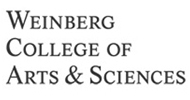Team:Northwestern/Considerations/Application
From 2011.igem.org
Helenmelon (Talk | contribs) |
|||
| Line 40: | Line 40: | ||
<div align="center"><html><table class="image"> | <div align="center"><html><table class="image"> | ||
<caption align="bottom"></html>'''Figure 2:''' Proof of concept for the binary detection (las), concentration detection (rhl), and novel concentration detection (genomic promoter) fluorescence.<html></caption> | <caption align="bottom"></html>'''Figure 2:''' Proof of concept for the binary detection (las), concentration detection (rhl), and novel concentration detection (genomic promoter) fluorescence.<html></caption> | ||
| - | <tr><td><img src="https://static.igem.org/mediawiki/2011/ | + | <tr><td><img src="https://static.igem.org/mediawiki/2011/3/39/Igem_glow_proof_pseudomonas.png" style="opacity:1;filter:alpha(opacity=100);" width="400px" height="300px" alt="fig1"/ border="0"></td></tr></table></html></div> |
Revision as of 00:30, 29 September 2011
PROJECT

RESULTS

CONSIDERATIONS

ABOUT US

NOTEBOOK

ATTRIBUTIONS


We have successfully demonstrated that E. Coli can be engineered to detect the presence of Pseudomonas Aeruginosa autoinducers. Our project opens up a wide range of possibilities for future iGEM projects and even commercial devices. We hope that one day our work will make it easier to detect and combat Pseudomonas infections in clinical applications.
In the immediate future, there are several ways to expand upon our project. One goal we were not able to accomplish is to match up the two different quorum sensing receptors with two different reporter genes. This would allow for more detailed information about the progression of a Pseudomonas infection. In addition, the two separate signals could be used as part of an AND gate to reduce the risk of false positives. Another area that could be expanded upon is genomic promoters. We have sent two autoinducer-activated genomic promoters to the registry, but there are literally hundreds more within the genome. Each promoter likely has slightly different properties and sensitivities, so perhaps there are ones particularly well suited for a detection system. Characterization and analysis of genomic promoters could allow for increased signal strength or decreased response time.
One proposed application of our construct is its employment as a bio-sensor in a device which can read fluorescence. The theoretical design of such a device is depicted below in figure 1.
 |
The above (figure 1) gives the proposed design (minus the technical intricacies) of how a prototype device which can detect P. aeruginosa would look. The device initially radiated light (from a blue LED source) which shines on the well. The well is coated with an orange layer that filters out only the wavelength of light that can be absorbed by GFP in cells (which are in the well). Once the GFP fluorescence begins, the photo-diode will convert the light based signal into an electrical one. This electrical signal will be processed by an Arduino microprocessor, which feeds the display with the relevant concentration.
To conduct a proof of concept, we subjected each of our three key component systems (which was also submitted for judging) to an array of blue LEDs with an orange filter. Figure 2 illustrates the validation of our concept and in turn, its practicality.
 |
In the long term, this technology offers great potential for a rapid Pseudomonas detection system. Existing commercial methods require a potential sample to be grown overnight, but our system saw measurable GFP transcription within an hour of induction. We envision the development of a handheld device that can be carried though a hospital, consisting of two chambers. One chamber would contain our engineered E. Coli, while a potential Pseudomonas sample would be placed in the other. The contents of the chambers would then be mixed and the device could be analyzed for the presence of a reporter. This faster diagnosis method could allow for quicker treatment in patients, and the detection of Psedeumonas in the hospital environment could also dramatically lower the incidence of this common nosocomial infection.
 "
"




